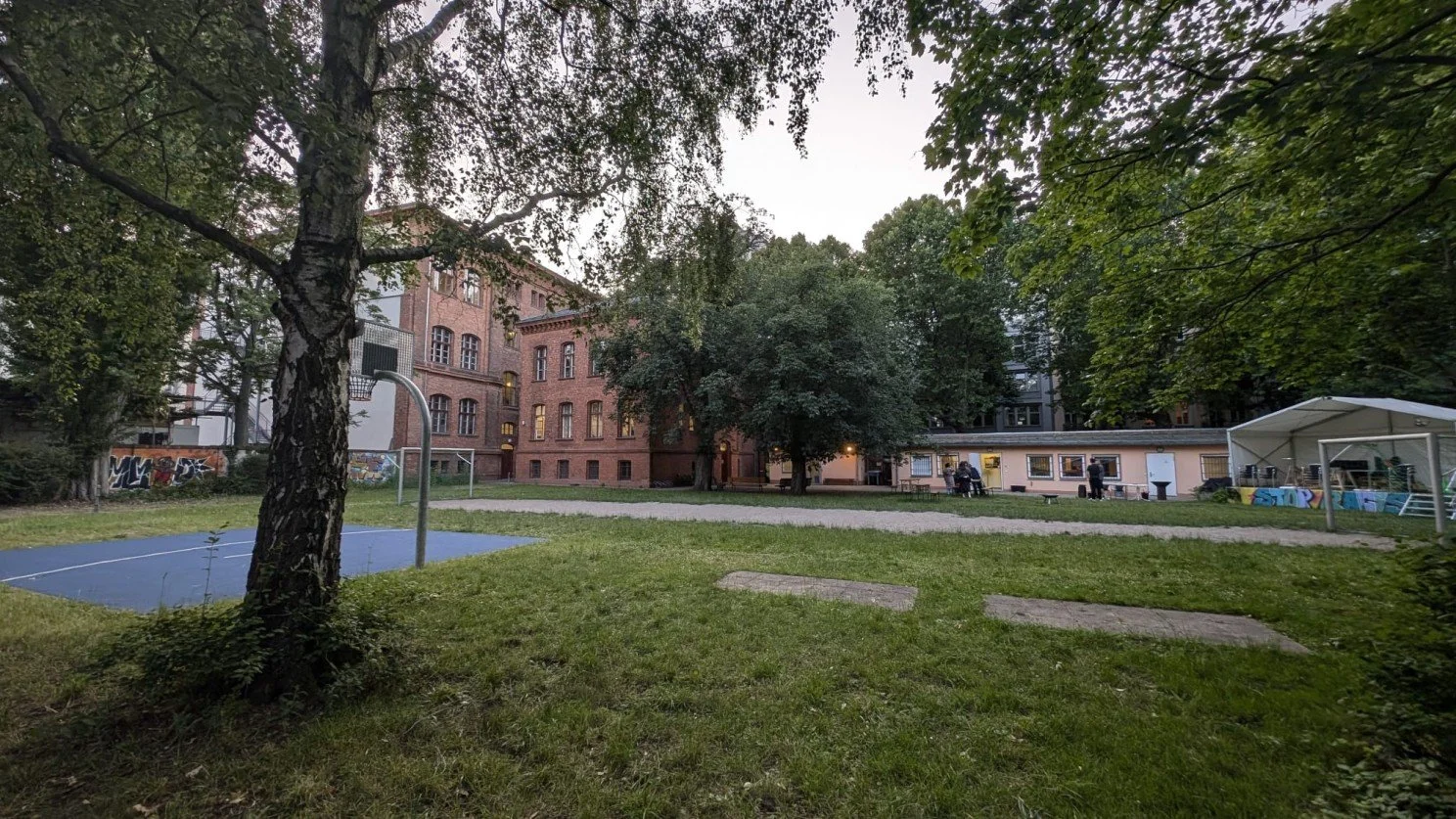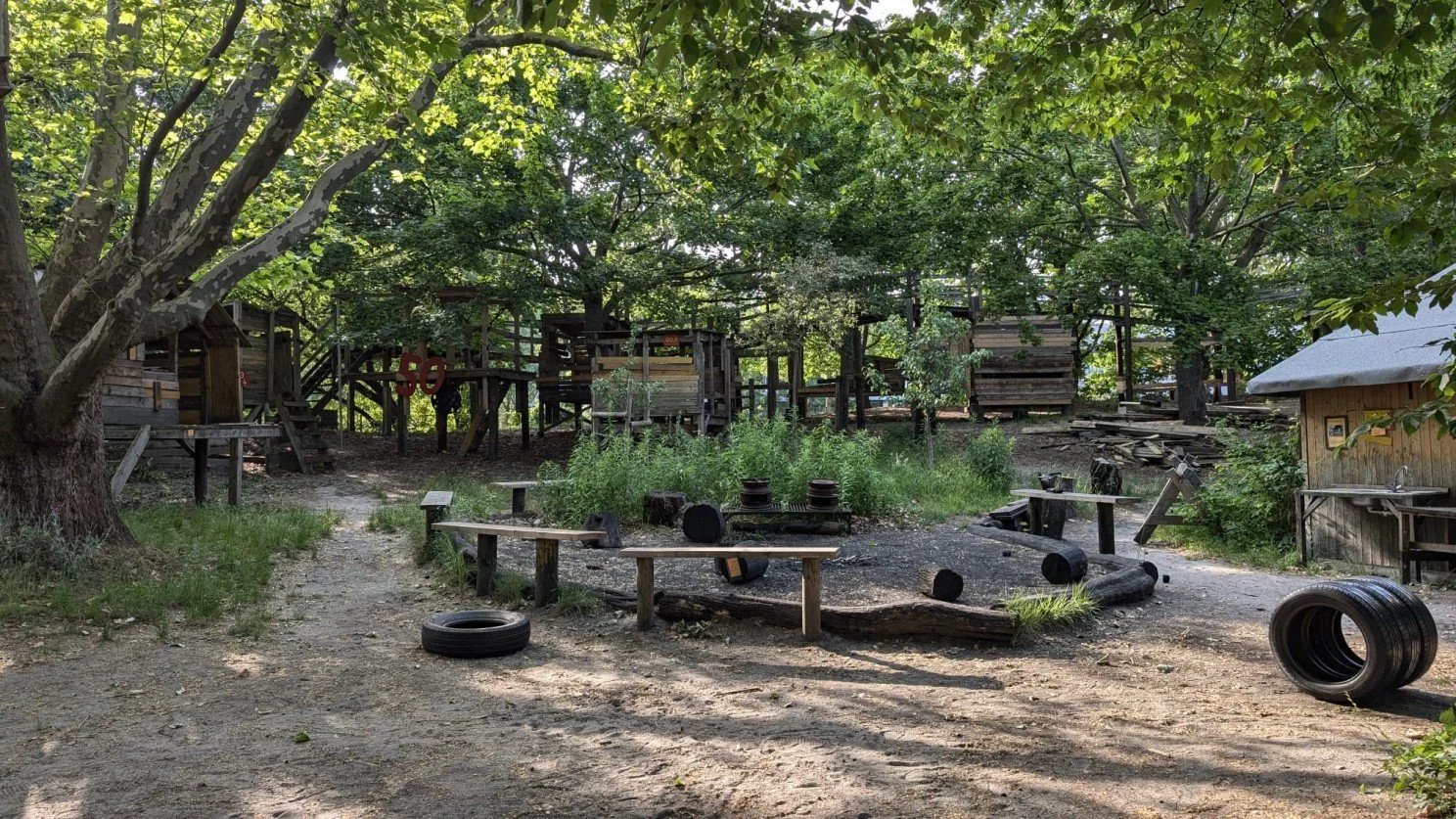What Berlin Taught Us About the Future of Youth Work
Just over a month ago, the team at Young Hammersmith & Fulham (Young H&F) returned from Berlin, brains buzzing and notebooks overflowing. What we thought would be a tidy knowledge exchange turned into something far more provocative: a confrontation with how different a youth work system can look - and still end up serving the same young people, with the same needs, in surprisingly effective ways. The learnings weren’t just about funding or policy. They were about philosophy. They were about what governments are willing to protect, what communities are trusted to do, and how systems decide whose voice matters.
Written by Gareth Dixon, CEO of Young H&F
In Berlin’s Mitte district, youth work isn’t just encouraged, it’s expected. €18 million a year is spent on youth services, supporting 52 youth clubs for over 67,000 young people. That’s in a borough facing 33.5% child poverty, and where more than half the population are from the global majority. Sound familiar?
What really stuck with us was Germany’s 2020 Youth Development and Participation Act. It legally obliges local authorities to provide youth work, but it doesn’t give young people the legal right to demand specific services. It’s a curious tension of obligation paired with structural flexibility.
At Die Oase youth club, which literally translates as “The Oasis,” and genuinely lived up to the name, we saw this dynamic in practice. Young people are free to come and go as they please. Die Oase exists because of constitutional obligation, but it’s run with the professional discretion that good youth work benefits from. There’s K-pop, kickboxing, screen-printing, footy. Activities reflect the interests of young people not the needs of bureaucratic checklists, and it works.
Die Oase Youth Club in Berlin
Compare that with how we do things in Hammersmith & Fulham, where there’s no legal mandate for youth work, but a lot of commitment nonetheless. H&F Council and John Lyon's Charity provide substantial funding for youth services in the borough, alongside many others: the National Lottery, City Bridge Foundation, Hammersmith United Charities, and ourselves. It’s an ecosystem, not a central structure. And somehow, it works too.
Germany doesn’t just fund youth work differently, it defines it differently too. The 2020 Act outlines five mandatory forms of provision for all districts: location-based youth work, outreach, recreation, youth participation, and curricular projects. Every district must cover all five, but how they do it is up to them.
In Hammersmith & Fulham, we don’t have a formal classification system like this, but we’re doing much of the same work. Our community member organisations naturally cover these categories. One runs a youth club. Another does outreach on estates. Others offer leadership training, creative projects, or educational workshops. The ingredients are there, the difference is in how it’s coordinated.
In Berlin, that coordination is a statutory requirement. In H&F, it’s an outcome of strong partnerships, grant funding, and shared values. We take different routes but get similar results. The Berlin model however, invites a question: what would it look like to name and structure our provision more deliberately? This would not be to restrict it but to ensure every young person has access to the full range of what youth work can offer.
Haus Der Jugend: The Families, Children and Youth Services Building in Mitte, Berlin
Perhaps the most striking thing we saw in Berlin was how youth spaces are used and how much autonomy youth workers have to use them creatively.
The We Love the Streets project was a fan favourite across our team. It transforms an unused car park into a space for around 80 young people every Friday night. From 9:30pm to 2am, it becomes a hub for football, connection, and what staff describe as “low-threshold counselling.” It shows how youth work can turn previously uninviting public spaces into hubs for care and community.
At Towanda, a girls-only youth club, we saw a different kind of transformation. Not loud or flashy, but run with clearly feminist and intersectional principles. One staff member said it feels “more like a home than a club,” and it truly did. Towanda offers recreational activities, one-to-one support, counselling, and specialised workshops for nearby schools — all grounded in social pedagogy and deep respect for the girls who use the space.
In Hammersmith & Fulham, we’ve got organisations doing this kind of work too. Thanks to a mixed economy of funding, we’re able to support tailored provision for specific communities. But what stood out in Berlin was how naturally those specialised offers sat within a universal system, not as add-ons, but as essential parts of the whole. It’s a reminder that specialist provision doesn’t have to sit on the margins. With the right coordination, it can be a core part of what every young person should have access to.
Throughout our week in Berlin, we saw genuine youth participation that went beyond consultation. The Children and Youth Participation Office in Mitte demonstrated this through a partnership between the local authority and community organisation Moabiter Ratschlag e.V. Together, they ensure young people have a real say — not just in youth voice panels, but in shaping spaces, influencing school decisions, and contributing to local policy.
Participation in Mitte isn’t perfect, but it’s not an afterthought. It’s built in, and it’s making an impact.
That aligns with Young H&F’s approach, though we get there in a different way. Our Young Grantmakers programme gave nine young people aged 14–21 the power to allocate £50,000 to 12 youth-led projects of their choosing. The key difference is scale and structure. Berlin’s participation is required. Ours is developed programmatically.
Both approaches have value. But the Berlin model raises a question: what if youth voice wasn’t something we had to make room for — but something everything else was built around?
Telix Adventure Playground
Berlin’s youth work is protected by law, but that doesn’t make it immune to the political landscape. Priorities shift, and as we heard whilst we were there, services can still face cuts depending on who’s in power.
In Hammersmith & Fulham, we don’t have statutory protection, but we do have a different kind of resilience. Our strength lies in diversity. When one organisation struggles, others adapt. When funding disappears in one area, the network finds a way to respond. It’s not centralised, but it’s flexible, distributed, and responsive.
As an infrastructure charity, we don’t deliver youth work directly, rather we connect and strengthen the organisations that do. Through initiatives like Level Up Youth Work Qualifications, we’ve supported 62 youth workers across 32 organisations, creating ripple effects across the borough. The type of impact we have can be more difficult to quantify, but is often more sustainable and enables services to evolve according to local need.
This kind of investment, in people, relationships, and long-term capacity, felt especially relevant in Berlin, where youth workers spoke casually about supporting young people over ten- to fifteen-year periods. Long-term relationships weren’t the exception but rather, they were the norm. There was an acceptance that impact doesn’t always show up right away.
It’s a powerful reminder that good youth work takes time, and that our short-term funding cycles often can work against that. Infrastructure organisations like Young H&F and other YPFs however are well placed to support the long view. We can invest in people, help organisations grow steadily, and hold space for the kind of work that doesn’t fit neatly into quarterly reports.
Our visit to Berlin convinced us that the future of youth work isn’t about choosing between constitutional and voluntary models. It’s about learning how they can strengthen one another.
Statutory frameworks provide structure and coverage. Voluntary models bring innovation, responsiveness, and connection. Infrastructure organisations like Young H&F can sit between the two, helping coordinate without controlling, and advocating for systems that work better for the people delivering and using them.
This isn’t a one-off exchange or a blueprint to replicate. It’s part of a longer conversation, about how youth work can thrive across different systems, and what it means to build that future collaboratively.



